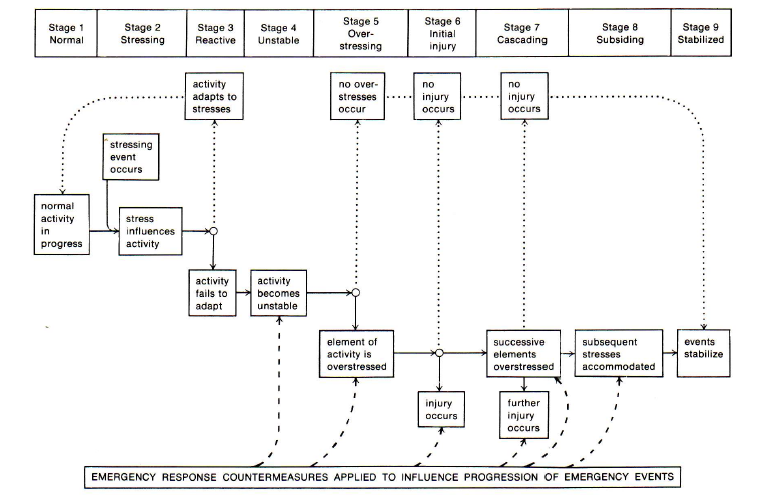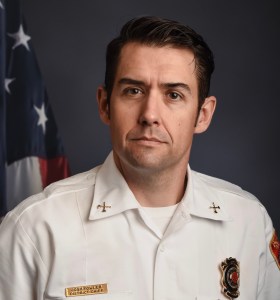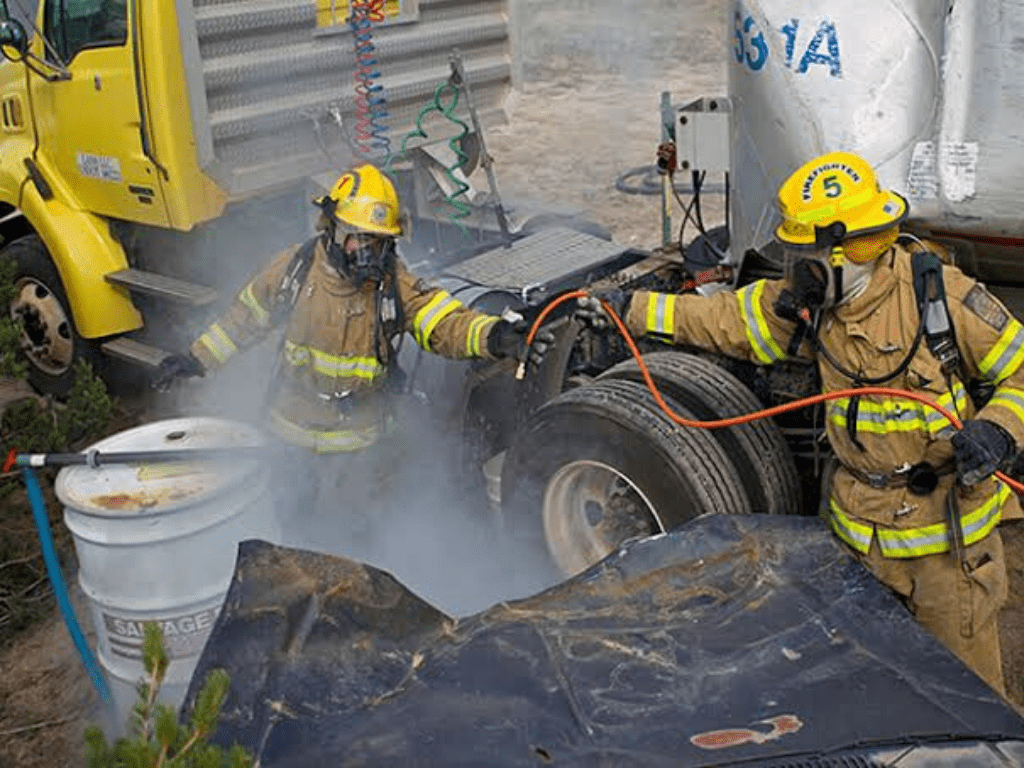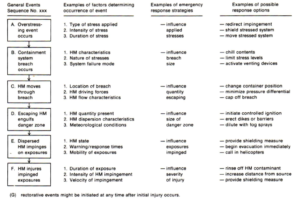HazMat Operations – Begin With The End In Mind, Part 2: D.E.C.I.D.E.
By District Chief Joshua Fowler
Beginning with the end in mind is nothing new, nor is it an original idea. The information shared with me falls along similar lines; only this time, the event is viewed as a motion picture. Because everyone learns differently, and while I may share an analogy or idea in certain terms, it may not hit the mark with everyone. Whereas if someone else can share the same thought or idea differently, it may be better understood.
After getting some personal feedback from one of the greats within the HazMat community (Greg Noll) on HazMat Operations – Begin With the End In Mind, I wanted to pass along the information shared with me. After all, what good is knowledge if it isn’t shared with the masses, right?
Many of us are familiar with the saying, “you can’t know where you’re going if you don’t know where you’ve been.” While somewhat cliché, this statement leads me to a question. How educated are you on the history of HazMat?
HazMat History
Ever heard of a gentleman named Ludwig Benner? Neither had I until a few weeks ago. During the late 1960s and into the 1970s, Benner, a hazardous materials specialist with the National Transportation Safety Board (NTSB), investigated multiple injuries and fatalities involving firefighters at hazardous materials incidents. The numbers were staggering, with twenty to fifty injuries/deaths annually. “That statistic bothered me,” commented Benner. I looked at the numbers of firefighters getting hurt at hazardous materials incidents, and figured out they were many, many times more likely to suffer a hazardous materials-related injury than the second-ranked classification of workers injured in the hazmat field – transportation employees.” (1)
Through this process, Benner recognized that firefighters were not negligent in their response. They were not adequately trained to respond to HazMat emergencies. Benner came up with processes that helped and continue to help firefighters mitigate hazardous material emergencies. It has become a simple model to remember and, more importantly, a means to prevent injury and death.
Lights… Camera… HazMat
Believe it or not, hazardous materials, emergencies, and behavior are predictable. Benner taught that one way to approach an incident was to view the emergency as you would a movie in which event sequences are presented in a visualized framework. This forces the individual to think in terms of beginning and end while providing a basis for progress evaluation. “They need to think in terms of events is established, and then related to the prediction of the emergency events sequence that you will try to influence through preplanning, emergency responses, and codes and standards activities.
Techniques for selecting significant ‘actors’ and ‘actions’ are presented and practices to develop your skills in producing mental movies of HM emergencies.” (2)
Before the dawn of digital movies, motion pictures consisted of a series of still pictures consecutively joined into twenty-four frames per second, thus causing the mind to see them as a continuous feed. This is precisely the concept Benner stressed when formulating mental movies for predicting HazMat behavior. Mental pictures create mental movies.
If you want to change the outcome, you’ll need to focus on what the emergency will do. But how? That’s a great question and one I hope to answer.
First, Know Your Anatomy
When hazardous materials are in a normal state, all the world is well and those who are within it. However, for the HazMat gods to be appeased, three things are imperative:
- Containment
- Confinement
- Isolation
The above bullets are crucial for hazardous materials to be normal. Hazardous materials packaging can be as simple as a plastic container or as robust as a fortified concrete structure. The key to preventing hazardous material emergencies is containment, confinement, and isolation.
Should the container become stressed in any way that exceeds its limitations, product escape is inevitable. Once the product has breached its container, events either stabilize or worsen by-product impingement on its immediate environment, thus causing further stresses. This is Benner’s Anatomy of an HM Emergency (Fig. 1).

As we can see from Figure 1, to impact the result of the emergency event progression, it must be interrupted somehow. Because stages have been assigned, each designated stage can be used to predict the next likely event to occur regardless of its number.
Second, Make a Decision
When faced with a chaotic emergency event involving:
- unknown chemicals and their amounts
- unknown victims
- first responders with little to zero HazMat experience
- multiple agencies
- etcetera
time moves at light speed. As Gordon Graham said it best, “Slooowww Dowwwnnn!” As the Incident Commander (whether initial or primary), it’s your job to reign everyone in (you know, herd the cats?) and makes a decision. Recognizing the issue, Benner created an acronym that was both simple and useful.
D.E.C.I.D.E. (4)
Detect HazMat presence
Estimate likely harm without intervention
Choose response objectives
Identify action options
Do the best option
Evaluate progress
Detect (5)
When detecting the possibility of hazardous materials, look for the clues.
Recognition
- occupancy and location
- container shapes
- markings and colors
- labels and placards
- shipping papers and facility documents
- monitoring and detection equipment
- senses
Identification
- markings and colors
- shipping papers and facility documents
- monitoring and detection equipment
Classification
- occupancy and location
- container shapes
- labels and placards
- monitoring and detection equipment
- senses
Estimate
This step is where the IC makes his or her mental movie using Figure 1 and determining the hazardous material’s most likely course. Questions in need of answers are:
- How much product is there?
- How lethal is it?
- Where is it going?
- How will/does it react with current conditions?
“This ‘movie’ begins with the setting observed upon arrival and ends with the last harmful event in the emergency. The expected behavior of the HM in the circumstances and the kind of harm that will probably occur constitute the plot of this ‘movie.’ The scenario must include the principal ‘actors’ such as stressing agents, the HM and its packaging, and the people or properties exposed to harm, and all the significant actions involving each actor.” (6)
Choose
While there is little guidance for this step, objectives are chosen based on the information obtained in step 2 (Estimate). “It represents the phase in a hazmat emergency where the Incident Commander and tactical responders implement the best available strategic goals and tactical objectives which will produce the most favorable outcome. [Outcomes] are measured in terms of fatalities, injuries, property, and environmental damage, and systems disruption.” (7)
Identify
This step “requires knowledge of the sequence of the predicted events and of methods that are available for intervening in that sequence if any.”(8) See Figure 2 (9) below.
“Doing”
As unfortunate as it is, this action step could very well be considered the bureaucracy step. This step is not only the measure in which emergency operations commence; it is also the legality and politics behind the decision making (i.e., legal requirements to respond, reputations, public expectations, personal risk-taking predispositions, etc.). “It is in this step that technical judgments are melded with value judgments, and the crucial decisions are made.” According to Benner, every decision made by the Incident Commander involves a compromise, a trade-off, if you will. And more often than not, you can count on technical judgments and value judgments conflicting.
Evaluate
In this phase of the process, the IC must consider his or her operational surroundings. They must honestly answer the question of, “Am I winning or losing?” If it’s working, keep doing it. If it’s not working, revise the plan or start from scratch. An Incident Commander should never be so arrogant as to put others’ lives in danger or cause more harm than good all because they refused to admit defeat and move on to Plan B.
Benner created this system almost 50 years ago, and while some of the terminologies may appear antiquated, the main principles are just as relevant today as when they were first penned. Many of us are familiar with circumstances in life that are replete with history repeating itself. If we can’t or won’t learn from others’ techniques or mistakes by willingly making the conscious choice of remaining ignorant, then shame on us.
I’ll be the first one to admit that I am still a novice on HazMat regardless of the mounds of paper that say I can do stuff. I’ve resolved myself to the fact that I will forever be a lifelong student – and I’m okay with that. I hope you are as well, but you’ll have to DECIDE.
1-Schnepp, Rob. “Ludwig Benner: The Father of Modern HAZMAT Thinking.” Domestic Preparedness Journal. June/2009. Domestic Preparedness Web. 4 Jul. 2018.
2-Benner, Ludwig, Jr., Hazardous Materials Emergencies. Oakton, VA: Lufred Industries, Inc., 1978, p. 5. Print.
3-Benner, Ludwig, Jr., Hazardous Materials Emergencies. Oakton, VA: Lufred Industries, Inc., 1978, p. 13. Print.
4-Benner, Ludwig Jr., D.E.C.I.D.E. In Hazardous Materials Emergencies. NFPA Journal, 1975, p. 23. Web. 8 JUL. 2018.
5-Noll, Gregory G., Hildebrand, Michael S., Yvorra, James, Hazardous Materials: Managing the Incident, 3rd Ed. Chester, MD: Red Hat Publishing Co., Inc.,2005, pp. 198-199. Print.
6-Benner, Ludwig Jr., D.E.C.I.D.E. In Hazardous Materials Emergencies. NFPA Journal, 1975, p. 24. Web. 8 JUL. 2018.
7-Noll, Gregory G., Hildebrand, Michael S., Yvorra, James, Hazardous Materials: Managing the Incident, 3rd Ed. Chester, MD: Red Hat Publishing Co., Inc.,2005, p. 420. Print.
8-Benner, Ludwig Jr., D.E.C.I.D.E. In Hazardous Materials Emergencies. NFPA Journal, 1975, p. 24. Web. 8 JUL. 2018.
9-Ibid., p.25.

About the Author
Josh Fowler is the District Chief of Beaumont Fire/Rescue’s 52 district in Beaumont, Texas. He is the program manager for the department’s HAZMAT team and Technical Response/Recovery Group. He has 18 years on the job and has served as a rescue specialist and technical information specialist with Texas Task Force 1 since 2006. Josh has been married to his best friend, Courtney, for 19 years, and together, they have 6 children.




